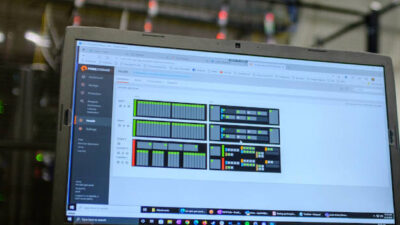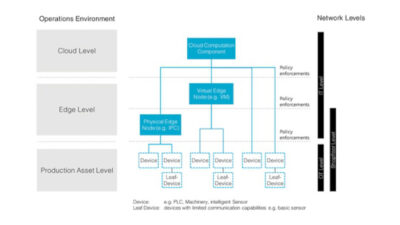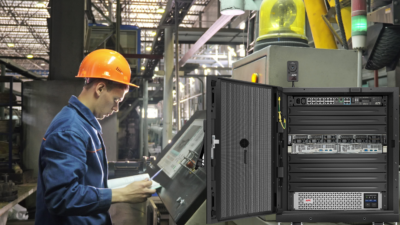Harmonizing existing industrial cloud-related groups aims to create industrial cloud interoperability, explained OPC Foundation at the Automate 2024 event by A3, the Association for Advancing Automation, in Chicago.
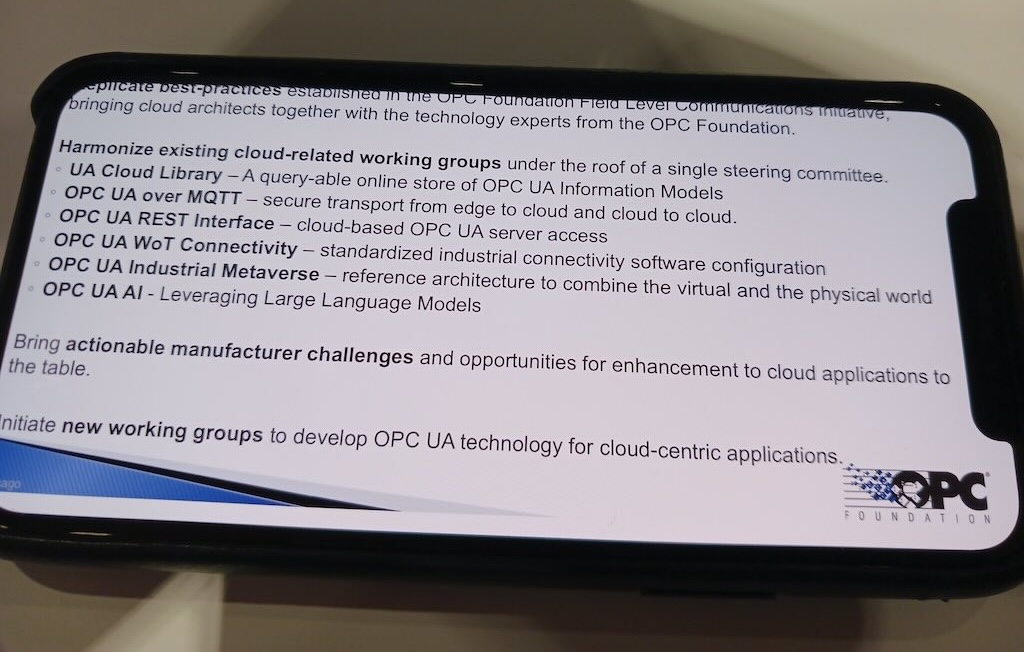
Learning Objectives
- Understanding reasoning behind seeking interoperability in cloud and IT environments, as OPC Foundation explained at Automate 2024 by A3 in Chicago.
- Explore how OPC Foundation provides oversight to avoid complexities in subgroups.
Automate 2024: Industrial cloud interoperability insights
- OPC Foundation seeks interoperability in cloud and IT environments, as explained at Automate 2024 by A3, the Association for Advancing Automation, in Chicago.
- OPC Foundation provides oversight to avoid complexities in subgroups.
Industrial interoperability for the industrial cloud requires collaboration, as explained during an OPC Foundation booth interview with OPC Foundation’s Mike Clark, director OPC Foundation North America, and Paul Hunkar, director of dompliance, at Automate 2024 event by A3, the Association for Advancing Automation, in Chicago.
OPC UA has been traversing from sensor to cloud now for more than a decade and announced in April the OPC UA Cloud Initiative, harmonizing existing OPC UA cloud-related working groups in one steering committee. The initiative combines six efforts of the UA cloud library (with CESMII), OPC Unified Architecture (OPC UA) over Message Queuing Telemetry Transport (MQTT), OPC UA REST interface, OPC UA web of Things (WOT) connectivity, OPC UA industrial metaverse and OPC UA for AI.
Separately, Microsoft and OPC Foundation AI efforts were discussed in an Automate 2024 session discussed in this Control Engineering article: “How to transform manufacturing four ways with AI.”
Hunkar and Clark said those involved include representatives from Microsoft, AWS, SAP, Alibaba, Equinor, L’Oréal L, among 65 other companies in a pre-competitive collaborative environment in which to share best practices in field-level communications. Expected result is a reference architecture that the community can use to create and enhance cloud technologies. Idea is to ensure that when OPC UA data goes into the cloud, it is stored and retrieved in the same semantic format, making connected cloud technologies more useful.
Clark added that by ensuring open standards for industrial cloud technologies, industries can avoid vendor lock-in and encourage more economic growth, in line with goals of large technology end-users such as Exxon-Mobil and Shell.
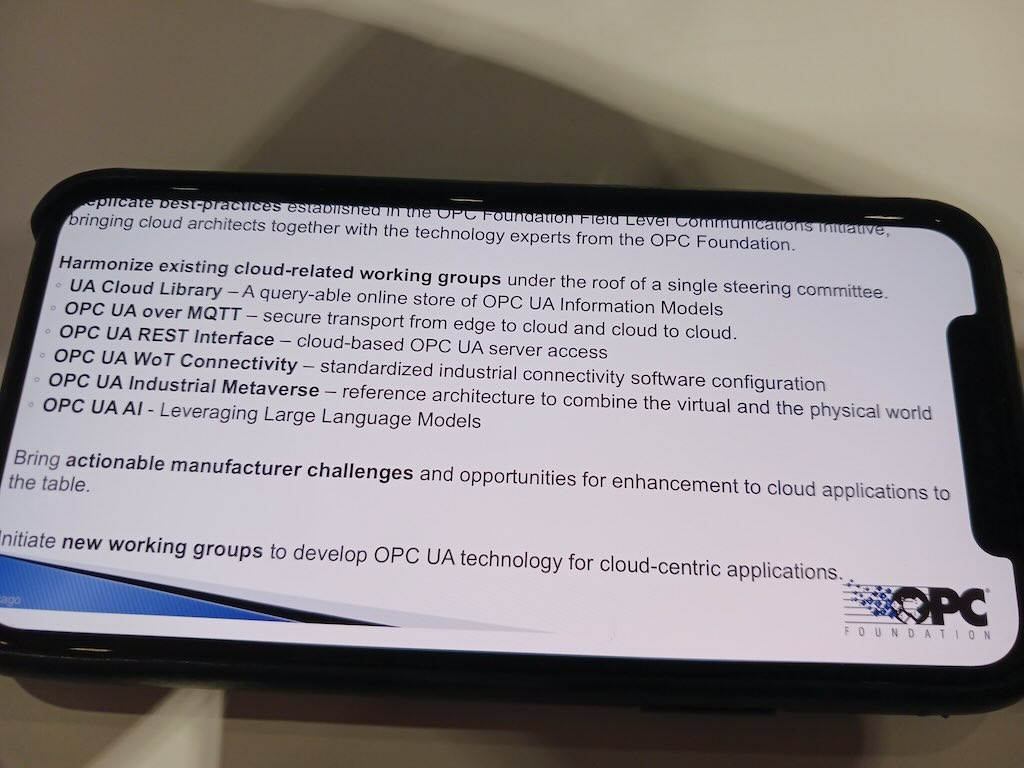
Interoperability in cloud and IT environments
The April 22 OPC Foundation press release provides background on the combined efforts that aims to “boost interoperability across IT and cloud platforms using OPC UA, targeting applications like: data analytics using [artificial intelligence] AI, industrial data spaces, digital product passports, and applications for the industrial metaverse as well as digital twins. The initiative aims to create a cloud reference architecture to provide best practices and optimized profiles of OPC UA standards for broader data sharing, in line with global regulations such as the EU’s Data Act or the EU’s Cyber Resilience Act (CRA). In addition, the initiative will cover the use of OPC UA Companion Specs and other OPC UA Information Models within cloud services.” In addition, “various use cases for traceability, such as the Digital Product Passport (DPP) and the Digital Battery Passport (DBP), will create a greater need for interoperability of data models. Governmental security requirements, such as the EU Cyber Resilience Act, also create further requirements for data communication standards. The IEC standard OPC UA is well positioned to fulfill these demands.”
OPC Foundation oversight to avoid complexities in subgroups
Because of many OPC Foundation initiatives, Clark said, oversight to harmonize findings among subgroups aims to “keep the house in order” and not add disparate terminologies or other complexities by having similar efforts in separate areas.
In another example, Clark said, the OPC Foundation’s Energy Committee has subgroups on wind power, hydroelectric, solar PV, oil and gas, power consumption, battery storage systems and carbon capture and storage (CCS), with 30 to 80 participants in each, usually meeting every two weeks. An oversight meeting occurs every two months to discuss and unify duplicative efforts, Clark said.
Other OPC Foundation efforts underway include controller-to-controller certification with OPC UA Field eXchange (UAFX), offline communications, definition of connections, locking technology, Automation ML testing, and an industrial profile for Time-Sensitive Networking (TSN).
The OPC Foundation has been promoting the development and adoption of the OPC information exchange standard since 1996.
Mark T. Hoske, editor-in-chief, Control Engineering, WTWH Media, [email protected] with information from OPC Foundation and website.
KEYWORDS: Automate 2024, cloud-based industrial interoperability
CONSIDER THIS
Anyone in your organization helping OPC Foundation committee-based information exchange efforts?

